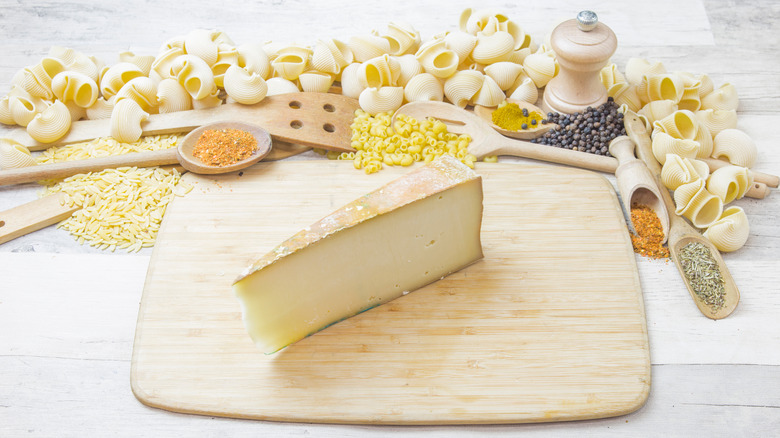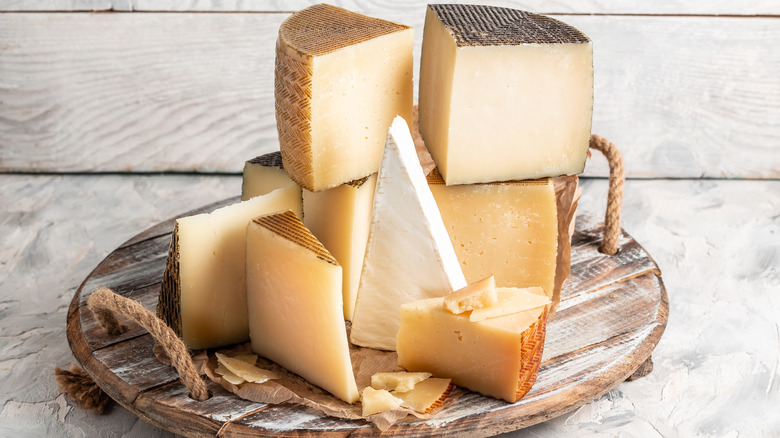How To Make Sure You're Buying Authentic Fontina Cheese
Creamy and mild, nutty and rich, mushroomy and vegetal — these are all different characteristics associated with various expressions of authentic Fontina cheese. While true Fontina comes in an array of disparate flavor profiles, most of the cheaper "Fontina" cheese options found in grocery stores aren't actually Fontina at all — but domestically-made, Fontina-adjacent alternatives. So, if you're planning on hosting a wine and cheese night, curating a decadent charcuterie board, or are simply a huge fan of sampling global cheeses, you'll likely want to know how to make sure you're buying authentic Fontina cheese.
In order to be considered authentic Fontina, a cheese must originate from a specific region in northern Italy, namely the Aosta Valley area in the upper northwest part of the country. According to Cook's Country, true Fontina will include its protected designation of origin status — or "Denominazione di Origine Protetta" in Italian, referred to as "DOP" — on the label to indicate adherence to strict authenticity regulations. This is achieved through the same process as Italian wines regulation, designed to preserve methods and varietals all over the nation. Any cheese not hailing from the Aosta Valley is a Fontina imposter, though they can sometimes be relatively tasty and affordable alternatives to the real stuff.
Two kinds of cheeses that are commonly confused with Fontina are Fontal and Fontinella. While these cheeses are often considered delicious in their own right, they are not interchangeable names for Fontina.
What's the difference between Fontina, Fontal, and Fontinella cheese?
Authentic Fontina cheese is Italian, made from unpasteurized cow's milk containing about 45% fat, according to Organic Facts. Fontina is known for its orange rind over pale, creamy interiors that can range from relatively soft in texture to nearly as hard as aged parmesan. Cook's Country notes that it often costs upwards of $20 per pound, unlike its oft-confused cousins, Fontal and Fontinella, which are much cheaper.
According to Cook's Info, Fontal is also a cow's milk cheese, though it originates in France. It was first crafted to make a substitution for Fontina cheese, though a lawsuit in 1951 prompted French cheesemakers to change the name from "Fontina" to "Fontal." With a redish-brown rind, it is known to be a meltable, semi-firm cheese with a sweet finish and small holes throughout.
Fontinella cheese is an American-crafted specimen made with pasteurized cow's milk. Known for its sweet, sometimes tangy character, Pediaa notes that Fontinella does not have the traditional holes that a Fontina would have and it tends to be lighter in color. Furthermore, "Fontinella" describes a brand of American cheese, while Fontina is the name of the original Italian inspiration (via Pediaa).

